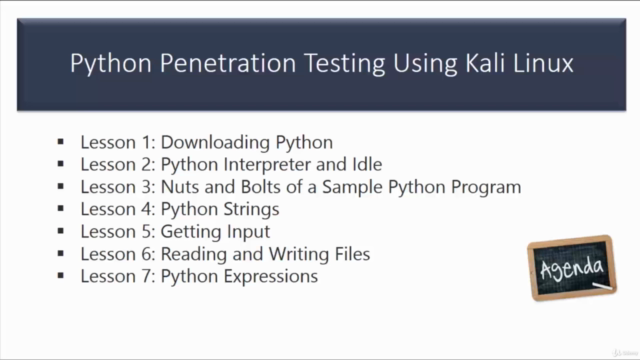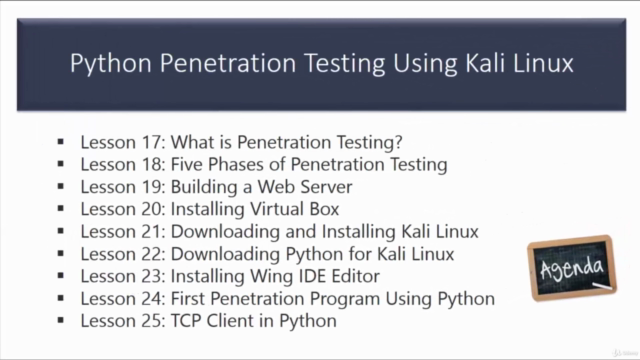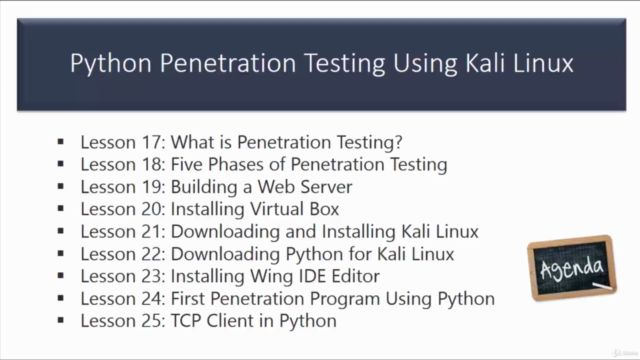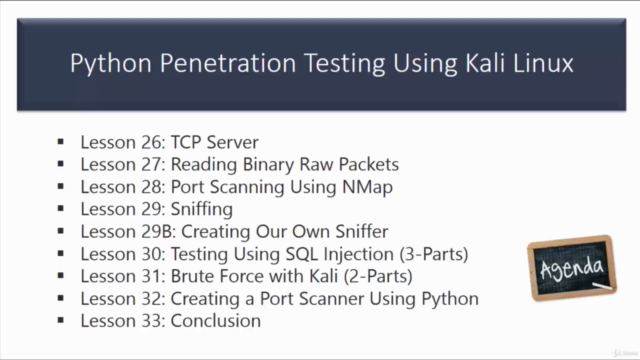Create Your Own Hacking Tools in Python
Learn to create your own hacking based programs in Python
4.19 (417 reviews)

19,611
students
6.5 hours
content
May 2017
last update
$39.99
regular price
What you will learn
This course will give a fundamental through to intermediate understanding of Python functionality as well as how to practically apply those new skills in creating your own programs for penetration testing
Screenshots




Related Topics
926414
udemy ID
8/8/2016
course created date
6/24/2019
course indexed date
Bot
course submited by